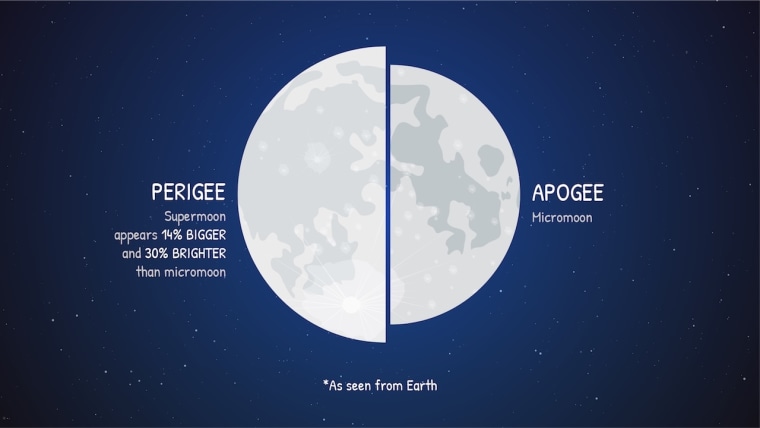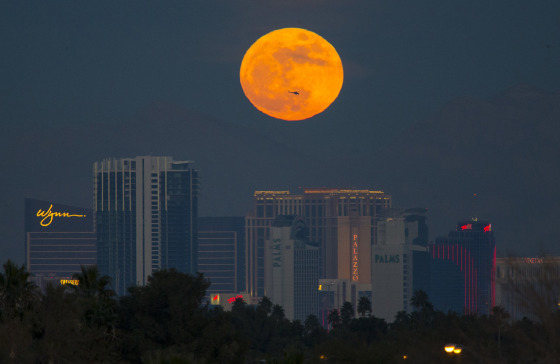Skywatchers will get a special treat Tuesday when the biggest, brightest supermoon of 2019 lights up the night sky.
This will be the second in this year’s trio of back-to-back supermoons. The first occurred Jan. 21, and the third will fall on March 21.
A supermoon is a full moon that occurs when the moon is at its closest point to Earth in its monthly elliptical orbit around our planet. Since they’re a bit closer to us, supermoons appear larger and more luminous than ordinary full moons — though scientists are quick to point out that the difference is generally so subtle as to be imperceptible.

“They are essentially the same,” Patrick Hartigan, an astrophysicist at Rice University in Houston, told NBC News MACH in an email. “You can maybe tell the difference from a normal full moon if you make a practice of looking at a lot of them” — something Hartigan said is true for him.
This month, the moon will be closest to Earth at 4:07 a.m. EST Feb. 19. At that moment — what astronomers call lunar perigee — our natural satellite will be 221,681 miles away from the planet. On average, the moon is about 240,000 miles from Earth; the greatest distance the moon gets from Earth — what’s known as lunar apogee — is about 253,000 miles.
The moon won’t be completely full until 10:53 a.m. EST Tuesday.
February's full moon is sometimes called the “snow moon" in folklore tradition because of the heavy snowfalls that are common in winter. Whatever you call this full moon, you won’t need any special gear to see it. You will only need clear skies.
Want more stories about the moon?
- Chinese satellite snaps rare photo of moon's far side with Earth in the background
- No one has set foot on the moon in almost 50 years. That could soon change.
- Moon bases being planned now may show us how to live off-planet
